How long does cake batter last, or can I make cake batter ahead of time is an important question with varying answers based on the cake ingredients.
In this post, I compare cake mix batter and scratch cake batter to see what’s possible and how different ingredients will affect the outcome.
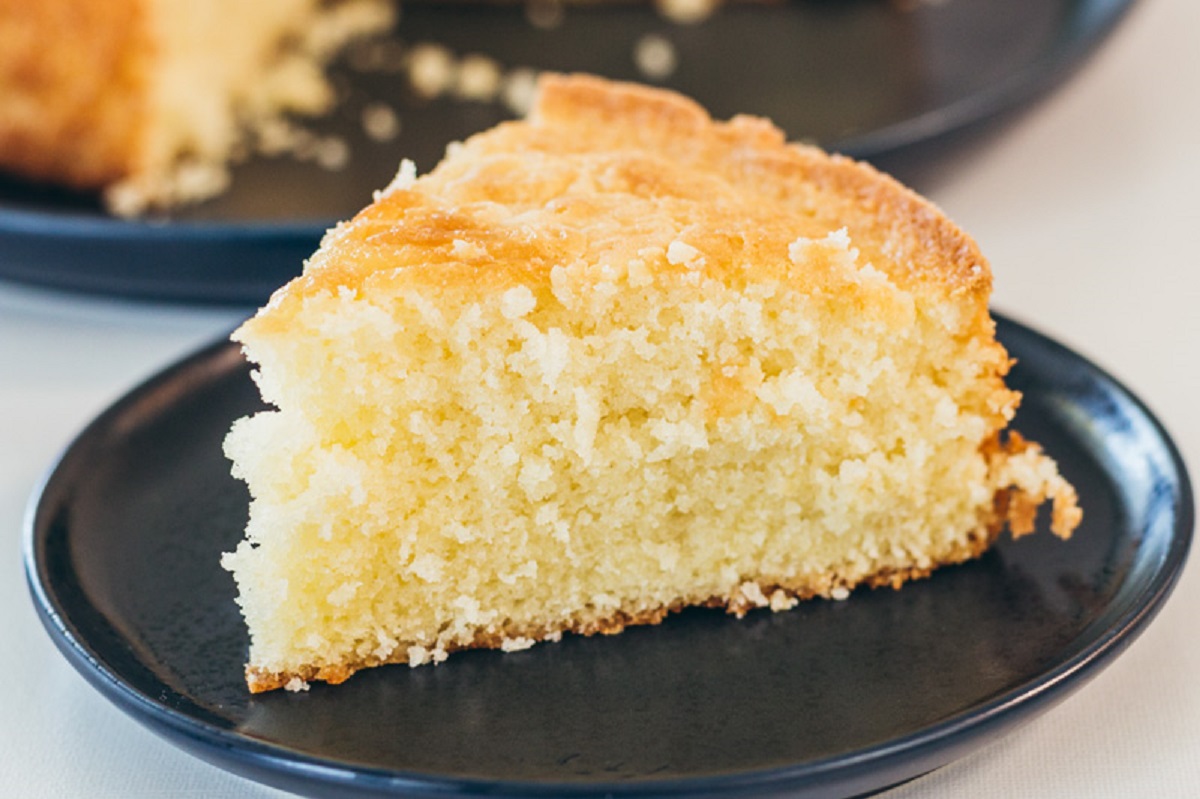
This post goes into detail on how long cake batter lasts and some important factors that go into it.
Knowing how long cake batter lasts is really essential because it can help you save time, money, and ingredients.
Some determining factors on how long you can keep premade cake batter really depends on the ingredients used, the type of cake batter, and the storage method you use.
Make sure to read through the first part of this post below as it explains what different ingredients can do in cake batter and why that matters.
ONE QUICK NOTE! There is a video close to the end of this post that goes through everything as well and you can see the texture of each cake slice, so don’t forget to check that out as well.
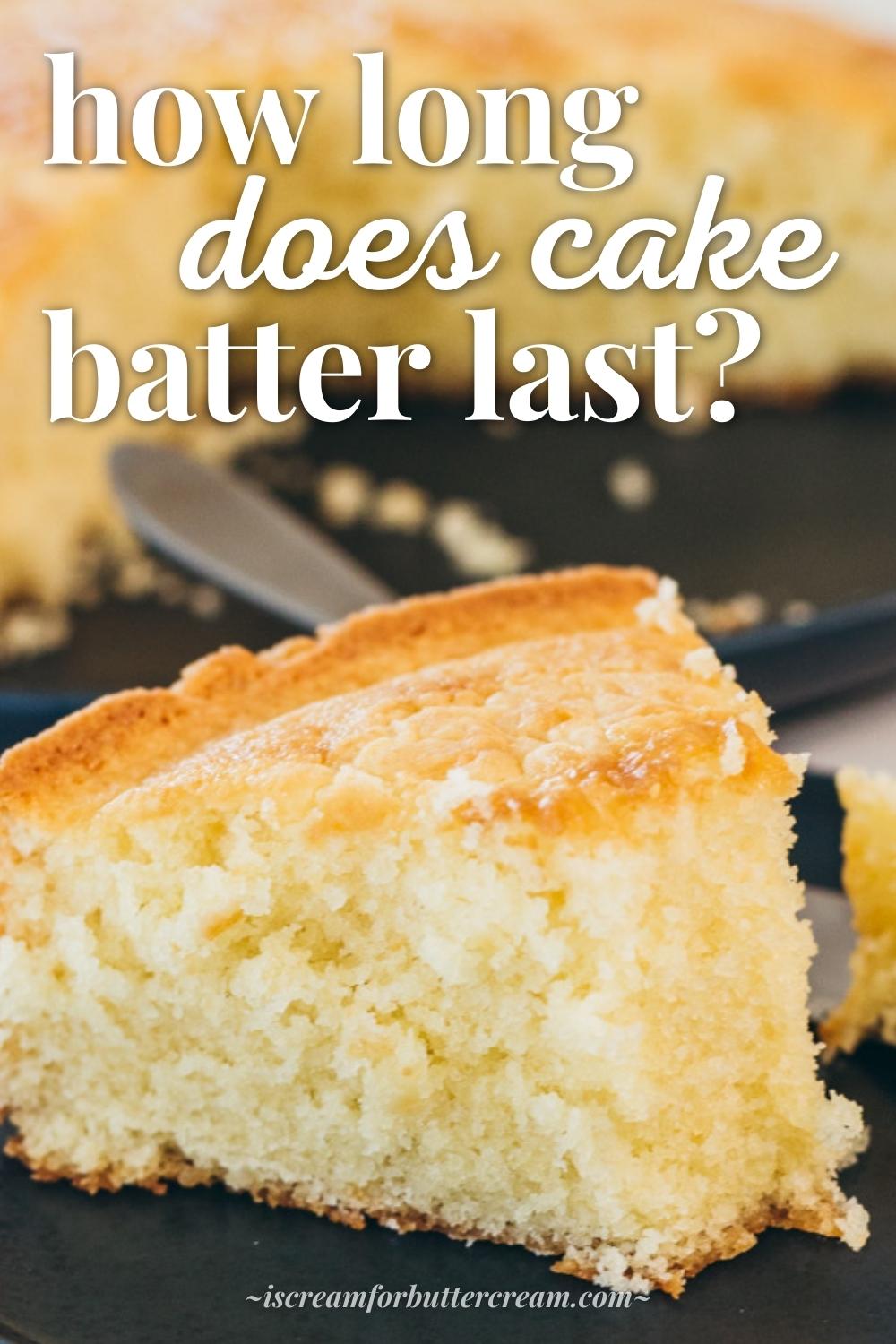
Important factors for how long batter lasts:

For this experiment, I’ve baked cake layers for both cake mix cakes and scratch cakes. That way, you can get an idea of how this will affect both, no matter which one you prefer.
It doesn’t matter to me what you like to bake or eat…cake mix or scratch cakes…it’s your choice, but I wanted to experiment with both, so I didn’t leave anyone out.
For the cake mix batter, I used Betty Crocker Vanilla Cake mix 15.25 oz box. I mixed and baked the batter according to the instructions on the box.
For the scratch cake batter, I used my recipe for my vanilla cake. You can find that recipe on my site here: Favorite Vanilla Bean Cake Recipe
Alright, let’s get a few things out of the way. They’re important things to know before we get to the experiment.
When not using cake batter right away:
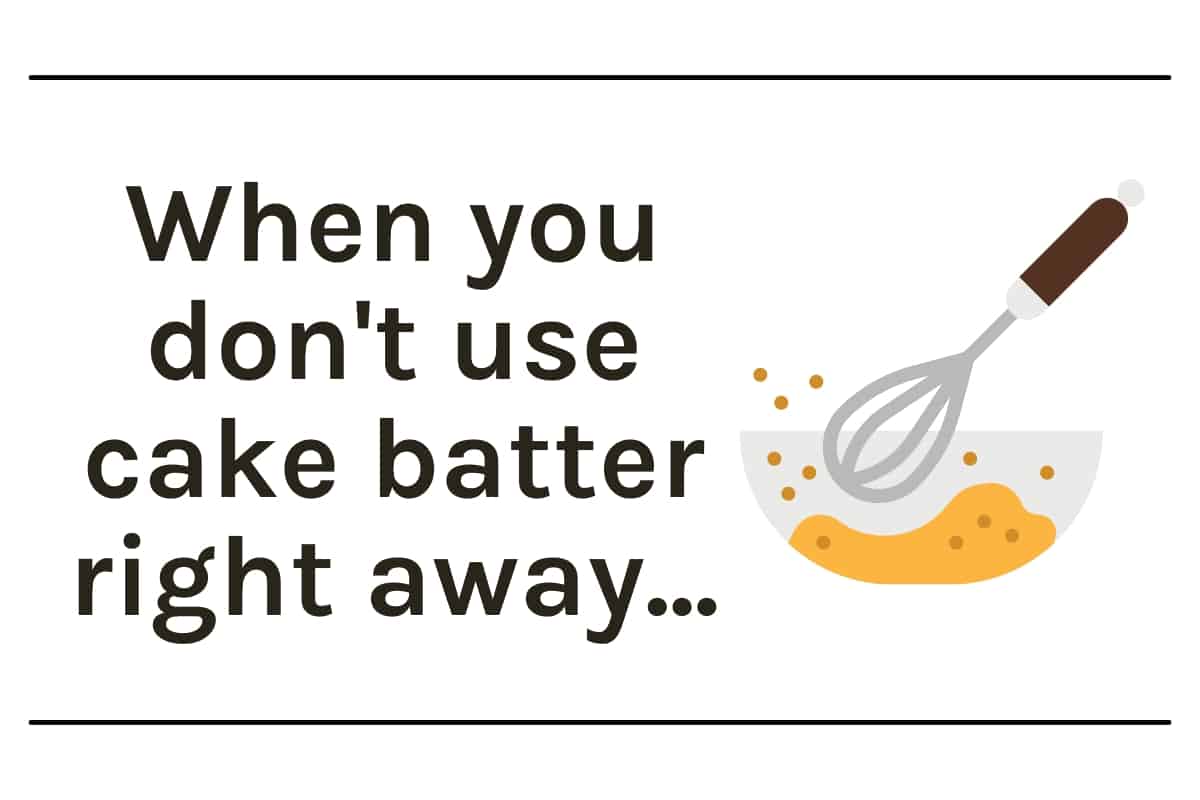
We’re going to talk a little about the differences in cake mix cakes and scratch cakes as it will pertain to how long the cake batter may last.
(If you want to delve even further into this topic and see the pros and cons of each, you can see this post: Cake Mix vs Scratch Cakes.)
When using cake mix batter:
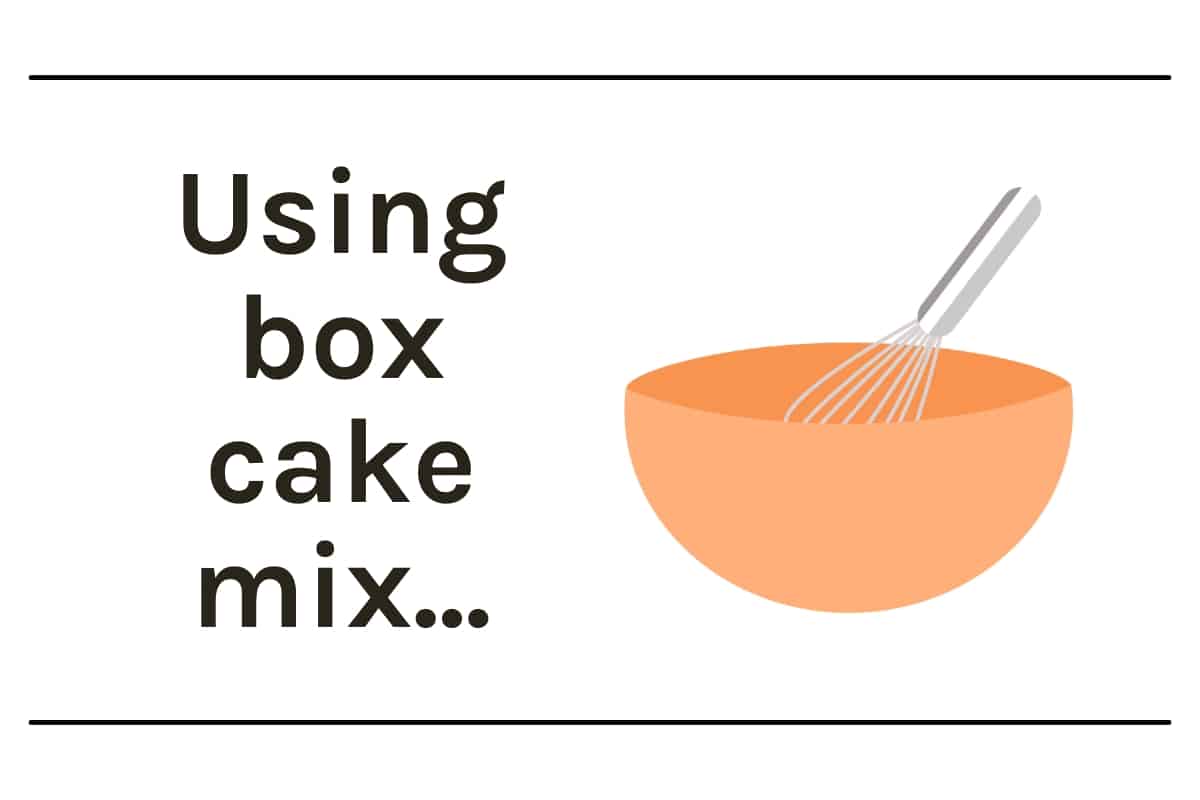
Cake mixes have additives in them. I’m not saying that’s good or bad, but it will probably make a difference in how long the cake batter will hold up.
The additives and whatever else is added to cake mixes are essentially what makes them more stable and predictable.
When using scratch cake batter:

Some cakes use baking soda, some use baking powder and some use both. For more detail on what the difference is, you can see this post: What’s the Difference between baking soda and baking powder.
I’ll summarize it here for you real quick though so you’ll know why it might make a difference whether a cake batter includes baking powder or baking soda especially when you’re not going to use the cake batter right away.
| Baking Powder |
|---|
| Double acting, which means it bubbles twice. Once when liquid is added and again when heat is introduced. |
| It may lose a little bit of rise if baking the batter later. |
So, if the recipe calls for baking powder and you don’t bake the cake batter right away, it may not rise as much because you’ll really only get the second reaction from the baking powder.
You may still get a rise with it, but it may not rise quite as high. It will just depend.
| Baking Soda |
|---|
| Not double acting, which means it starts reacting once the liquid is introduced. |
| The batter may not get enough rise if it’s baked later. |
So, if the cake batter only calls for baking soda and no baking powder, then it might not work as well as cake batter with baking powder added if you don’t bake it right away.
That’s because baking soda is not double acting and it will start working as soon as it combines with liquid, so you really only have a certain amount of time.
This means if it’s already done its job and then you bake it later, well you may not get enough rise since it’s not going to have as much lift when heated as baking powder would.
| Both Baking Powder and Baking Soda |
|---|
| This batter may be okay to bake later as the baking powder will get that second rise when you put it in the oven and heat is introduced. |
| Not all recipes will react the same way though and so it’s best to experiment on the particular recipe you’re using. |
Remember though, baking soda and baking powder aren’t interchangeable, so don’t substitute one for the other, because they are used in different instances.
The experiment & results:

I wanted to try out this experiment, but there are so many different factors and recipe possibilities…I’m just one person and can’t account for them all.
So I decided to do the experiment based on an average cake mix and then one experiment based on my own scratch vanilla cake recipe, which you can find here.
My scratch cake recipe does not use baking soda and that could make a difference. (Read about that above in the important things to note section of this post.)
I picked vanilla cakes because it’s easier to see how the texture turned out and how they browned when baked.
Here is the breakdown of the experiment I conducted:
| The experiment for both cake mix batter and scratch cake batter: |
|---|
| Baked right away. |
| Chilled batter in the fridge for an hour, then baked. |
| Chilled batter in the fridge for 24 hours, then baked. |
| Froze batter in a ziplock freezer bag for a week, then defrosted in the fridge for about 8 hours, then baked. |
Batter mixed & baked right away:
Cake mix:
This cake layer was baked immediately after the batter was mixed up. The cake rose perfectly and was fluffy, moist and tasted good.
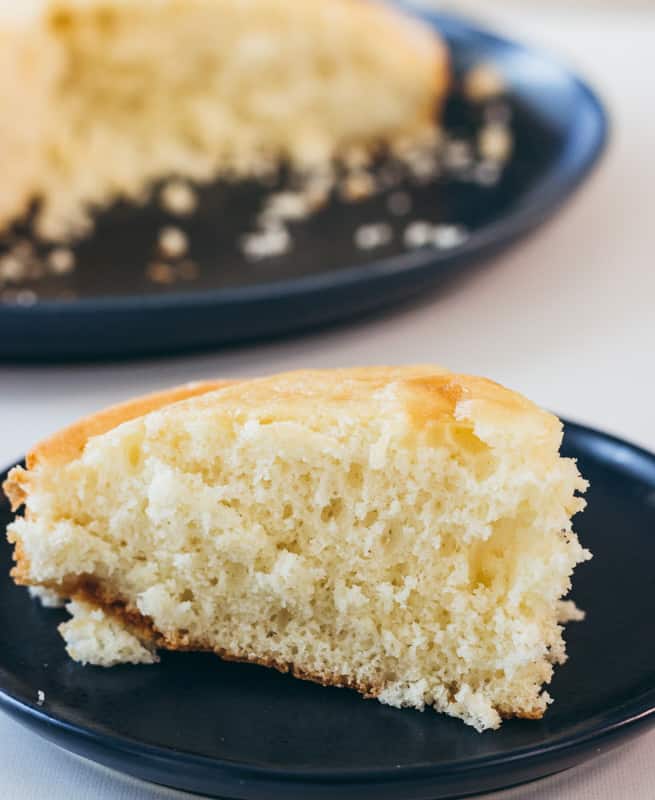
Scratch cake:
This cake layer was baked immediately after the batter was mixed up.
The cake rose perfectly, the texture was soft (scratch cakes are a little denser which just means the crumb is a little finer). It was moist and tasted good.
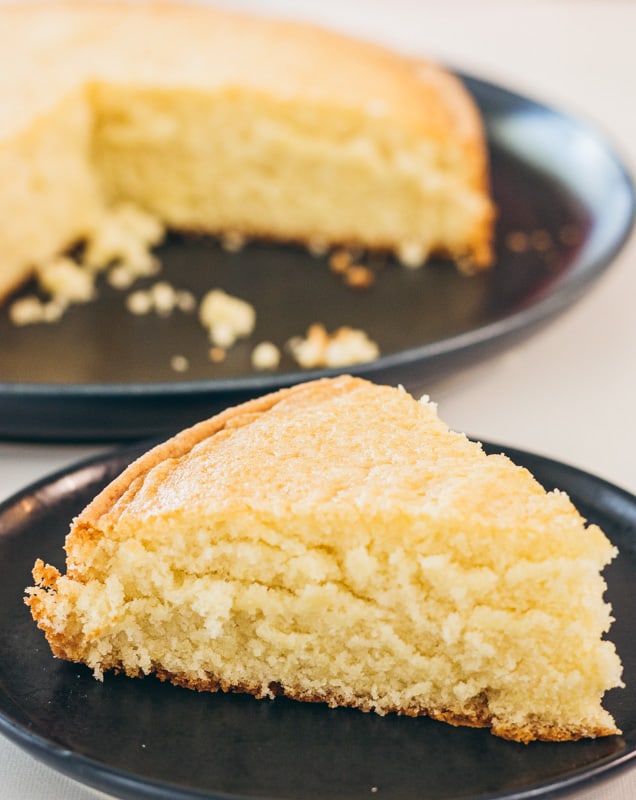
Batter mixed, then chilled in the fridge for an hour and baked:
Cake mix:
This batter was mixed, left in the mixing bowl, covered with plastic wrap and stored in the fridge for an hour, then baked. The batter was still chilled when I added it to the pan.
This cake didn't rise as quickly and I had to bake it for about 5 minutes longer. Most likely because the batter was cold. But the cake turned out just as good as if I’d immediately baked it. It was moist, fluffy and tasted good.
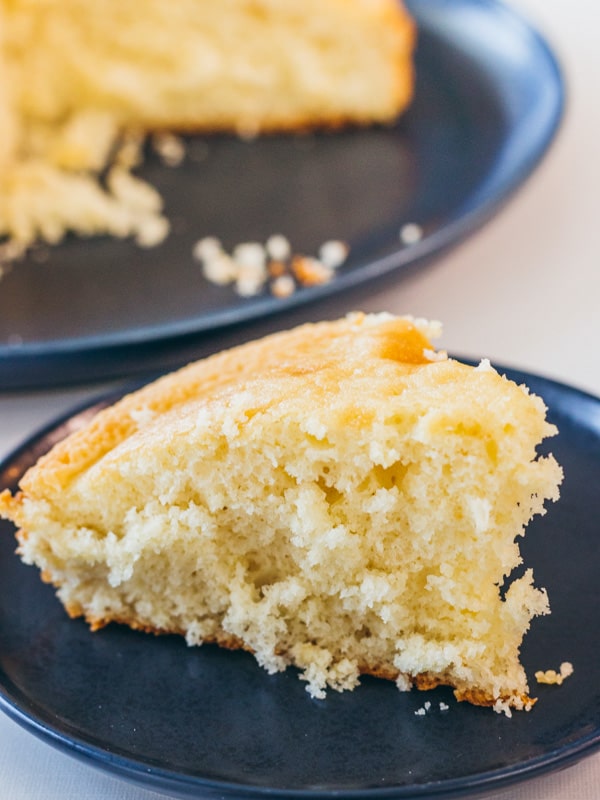
Scratch cake:
This batter was mixed, left in the mixing bowl, covered with plastic wrap and stored in the fridge for an hour, then baked. The batter was still chilled when I added it to the pan.
This was the same as the cake mix. It didn't rise as quickly, but it did end up rising as much as usual in the end. The cake turned out just as good as if I’d immediately baked it. The texture was soft, it was moist and tasted good.
(Remember that the scratch cake recipe I used, does include baking powder and that makes a difference.)
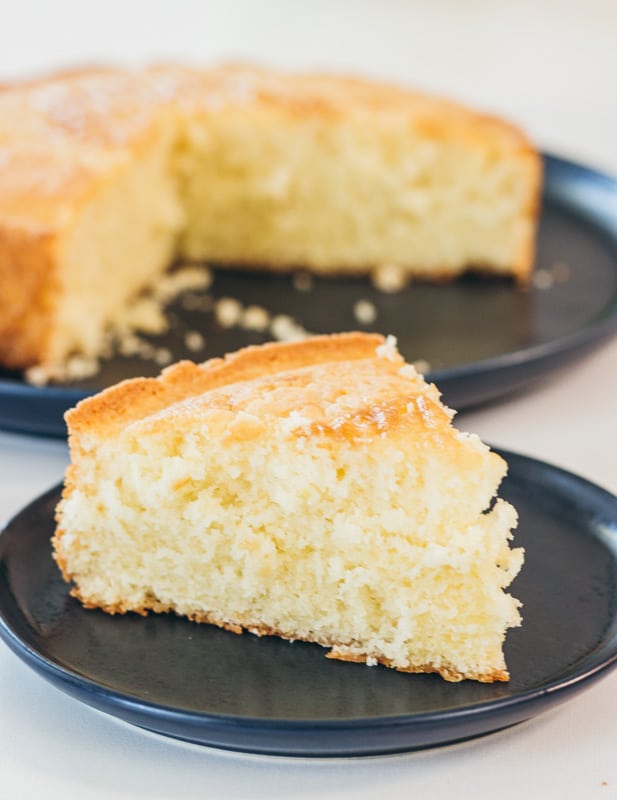
Batter mixed, then chilled in the fridge for 24 hours and baked:
Cake mix:
This cake batter was mixed, then left in the mixing bowl, covered with plastic wrap, then chilled for 24 hours. The batter was still chilled when I added it to the pan.
I saw no difference between this one and when I baked it 1 hour later. It was moist, fluffy and tasted good.
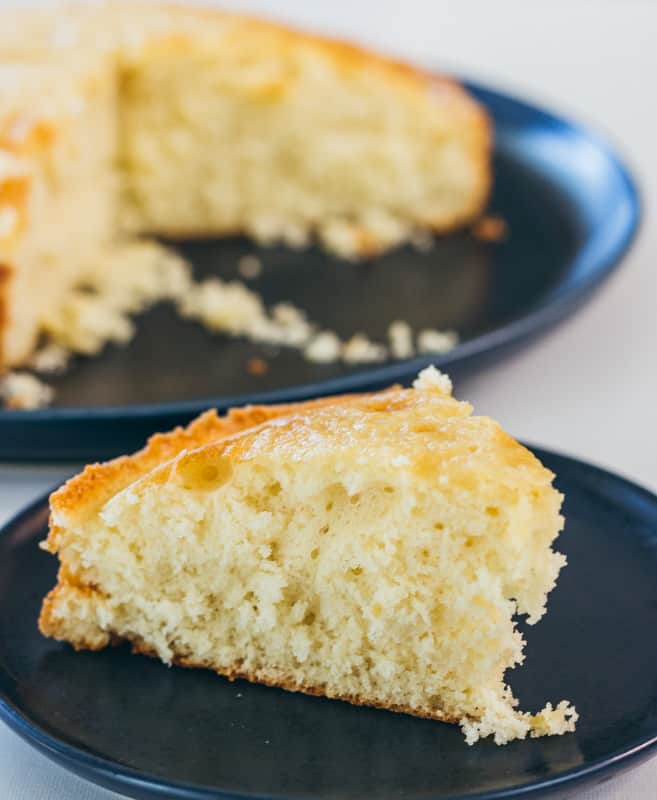
Scratch cake:
This cake batter was mixed, then left in the mixing bowl, covered with plastic wrap, then chilled for 24 hours. The batter was still chilled when I added it to the pan.
I saw very little difference between this one and when I baked it 1 hour after mixing the batter. It may have been slightly more dense though than the one immediately baked, but it wasn’t a huge difference.
The texture was still soft, moist and it tasted good. (Remember that the scratch cake recipe I used, does include baking powder and that makes a difference.)
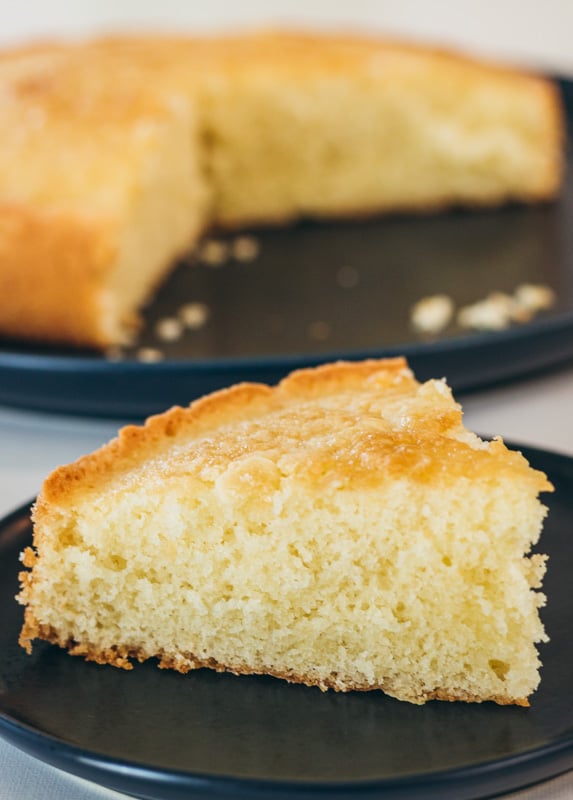
Batter mixed, then frozen in a freezer bag for a week, defrosted in the fridge for about 8 hours and baked:
Cake mix:
This batter was frozen in a ziplock bag for one week. It was defrosted overnight in the fridge.
I then let it sit out for about 20 minutes in the ziplock bag, then I sort of smashed it around in the bag to mix it up a bit. I cut a hole into the corner of the bag and squirted the batter into the pan.
The batter was still cold (but not frozen) when I added it to the pan.
It rose mostly in the middle and not as much around the edges. It was not quite as fluffy and moist as the others, but it still tasted good.
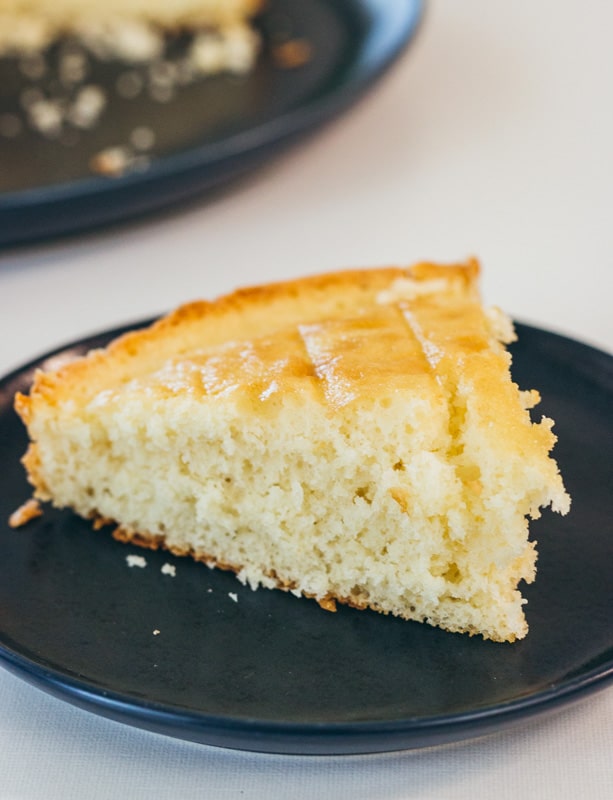
Scratch Cake:
This batter was frozen in a ziplock bag for one week. It was defrosted overnight in the fridge.
I then let it sit out for about 20 minutes in the ziplock bag, then I sort of smashed it around in the bag to mix it up a bit. I cut a hole into the corner of the bag and squirted the batter into the pan.
The batter was still cold (but not frozen) when I added it to the pan.
The edges didn’t rise as much. This one needed to be baked for about 5 minutes more than the recipe called for originally. It turned out a bit more dense and doughy than the others, but still edible and tasted good.
I think this one ended up turning out okay, mainly because it used baking powder. It did have some baking soda in it but mostly used baking powder for the leavening ingredients. (Read the beginning of the post to see why that would make a difference.)
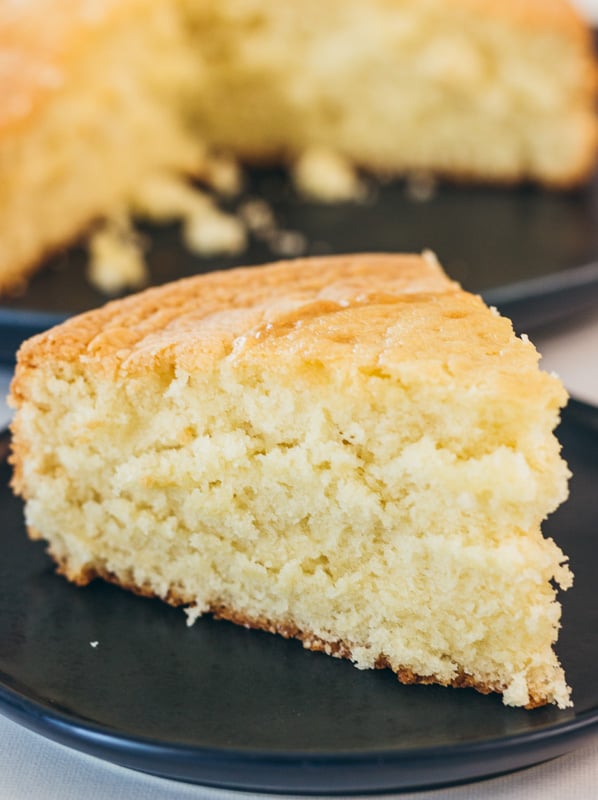
Tips & FAQs:

First, make sure to mix the cake batter according to the recipe instructions. It really makes a difference.
You also definitely don’t want to over-mix the batter because that will make it super dense, rubbery and dry. If you want more guidance on exactly how long to mix cake batter, go here: How to Mix Cake Batter
This will depend on the ingredients that are in the cake batter and how it’s stored, but generally, cake batter can last a couple of days in the fridge and about a week in the freezer if it’s cake mix batter or if the recipe included baking powder and not baking soda alone.
I think the better question to ask is how long can you keep cake batter and it still bake okay though. The batter will probably last a while in the freezer, but the longer you keep it chilled or in the freezer before baking it, the less chance you’ll get a cake that rises properly with a good texture.
Essentially, based on this experiment, I wouldn’t keep cake batter longer than a week in the freezer and that’s only if it’s a cake mix. Even then, your cake isn’t going to be as good as it would be had you mixed it up that day or the day before.
If you’re making a scratch cake, I wouldn’t freeze the batter at all. For best results, bake it the day you mix up the batter. Waiting to bake a cake that only uses baking soda, may not turn out as well.
Yes, you can, in some instances. It’s generally okay to chill cake batter for an hour or two and even overnight (for cake mix batter and some recipes that don’t just use only baking soda).
Scratch cakes may not rise quite as high and may be slightly dense if they’re not baked the same day you mix up the batter or at least the next day.
It’s best to bake cake batter immediately once it’s mixed, but it can be covered and stored in the refrigerator for a couple days, then baked.
Depending on the ingredients though, the cake may not rise as much as it would had it been baked immediately.
Yes, you can freeze cake batter, but depending on the ingredients in the batter, once it’s eventually baked, it may rise as well as if it’s baked the day the batter is mixed up.
The longer the batter is frozen, the less the cake will turn out like it’s meant to.
It’s best to bake cake batter immediately once it’s mixed, but cake batter can last up to a week when stored in a freezer bag in the freezer.
Depending on the ingredients though, the cake may not rise as much as it would had it been baked immediately.
It’s always best to bake the cake batter right after you mix it up, but if you can’t, then you can store it in the mixing bowl, covered with plastic wrap in the fridge for a day or two.
If you need to keep the batter fresh for longer, you can freeze it by adding it to a freezer ziplock bag. Just know that by freezing cake batter, it may or may not bake properly later. You’ll need to defrost the batter before you can bake it as well.
Know that the longer you go between the time of mixing up the cake batter and baking it, the less chance you’ll get a good cake texture and rise.
Make sure to defrost the cake batter in the refrigerator. Never leave raw cake batter at room temperature to defrost.
Once it’s defrosted in the refrigerator, stir it, then add it to the baking pan or pans and bake.
Chilled cake batter can be poured right out of the mixing bowl into cake pans. The cake may need to be baked for a few minutes longer but just watch it closely toward the end of the baking time.
See this post for more tips on how to tell when your cake is done: How to Tell When Your Cake is Done Baking
If the cake batter is frozen, then it’ll need to be defrosted before it’s baked. If the batter has been frozen in a zip lock freezer bag, just set it in the fridge and let it defrost overnight or during the day, then squeeze the zip lock bag a bit to mix it up slightly.
Cut one of the corners and squeeze the chilled batter into the baking pan and bake.
No, you never want to leave cake batter out of the fridge for any length of time. You want to keep it chilled until you can bake it, so that it doesn’t spoil.
Instead of storing the cake batter, the best way to make cakes ahead of time is to bake the batter the day it’s made, then freeze the baked cakes.
Freezing baked cake layers works beautifully and is much better than freezing cake batter. I’ve got lots of tips on how to do that here: Tips for Freezing Cakes & Cupcakes
You can actually freeze cakes and get absolutely no freezer burn and no one will be able to tell they’ve been baked ahead and then frozen IF you do it the right way.
It’s not safe to let cake batter sit out at room temperature. If you have any leftover cake batter, always cover it or add it to a ziplock bag and place in the fridge for up to a couple of days or the freezer for up to a week.
Video:
I hope this was helpful and that you learned some things along with me.
I was pretty surprised that the scratch cake batter actually baked up pretty well after storing it. (Again, I think that is due to the recipe having baking powder in it and not baking soda and the fact that the batter wasn’t over-mixed, but still, I was surprised.)
Other posts you might like:
- How Long Does a Cake Last in the Fridge?
- How to Store Frosted Cupcakes?
- Why are my Cakes Dry?
- Why Do Cakes Sink in the Middle?
- How Much Cake Batter do I Need?
- How to Store a Cake
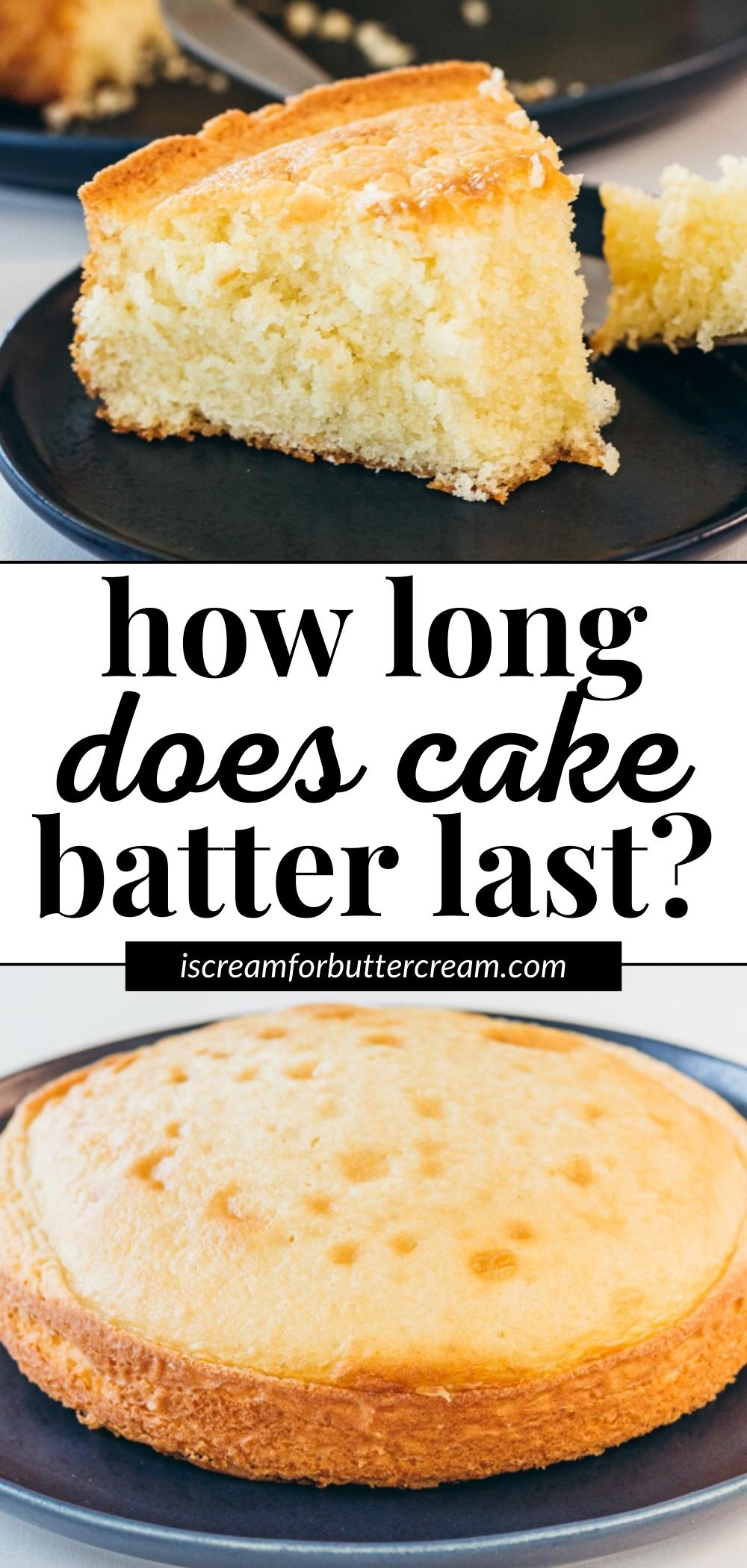


Lisa Creuzer
Thank you so much! I ran totally out of cooking gas right after I poured the cake in the pan and found your research. I put the cake in the fridge for an hour while I ran to get gas. FYI. It was a scratch cake with baking powder and no soda. It didn’t rise evenly, just like you said. It was a roll cake, so not noticeable and it still tasted great.
Kara Jane
Hi Lisa, thanks for the comment. This will be helpful to others as well. Scratch cakes are so picky, aren’t they! Glad it was just a cake roll though and was still edible!
Jennifer
Thanks for running this test! Helped me decide what I want to do for my next batch of cupcakes!
Kara Jane
Yay! So glad it helped!
Jan
Thanks for this info. I’m always about doing things ahead so this was great!
This wasn’t in the experiment but do you think it would help to re-beat the ingredients after taking it out of the fridge and before putting it in the baking pans and oven or is it more about the baking soda/baking powder thing?
Also, I was wanting to make a Rhubarb sprinkle cake that basically is just that, sprinkling the following ingredients in this order into a 9 X 13 Pan. No eggs or oil are added.
4 cups chopped rhubarb
1 – 3 oz pkg strawberry flavoured gelatin dessert mix
1 cup granulated sugar
1 cup water
1 pkg. 432 g yellow cake mix
1/2 cup coconut
1/2 cup nuts
3/4 cup melted butter
So sprinkle in the order given above into pan, do not mix and bake in 325 oven for 25 to 35 minutes.
Do you think this could be done the night before?
Kara Jane
Hey Jan, I think it makes more of a difference with it having baking soda than re-beating it. I probably wouldn’t re-beat the batter, but maybe just mix it a little with a spoon or something. Anyway, for the rhubarb sprinkle cake…locally we call those dump cakes…which just means you dumb the ingredients into a cake pan in a certain order. For this one though, I wouldn’t make it ahead of time, but not because of the cake mix. I don’t think that would be a factor as you’re just sprinkling it on top of the other ingredients. I’d actually not make it ahead of time because it has jello in it and adding the water and all the other ingredients and then waiting to bake it just doesn’t seem like it would turn out right. It would probably become gelatinized before baking and I don’t think that’s the intent. Hope that makes sense!
Tracy
Kara Jane, you seem to have a blog post about each of my cake questions! Thank you so much for this!
Kara Jane
Awe Tracy that’s awesome to hear! I’m glad it helped! ?
Sylvia Haile
Great morning, I am genuinely appreciative for your experiment. I am a beginner baker and I have had to throw out plenty of incorrectly baked cakes and am often pressed for time. Thanks so much.?
Kara Jane
You’re so welcome…happy to help. 🙂
Bernadette deGonzague
Hi Kara, thank you for this post. VEry helpful. Could you leave out the baking soda/powder and add it back in just before baking?
Kara Jane
Hey Bernadette, you could try it…I’m not sure it would mix properly if the batter is cold. It’s worth experimenting though!
Shraddha
Let us know if you experimented on this please!
Kara
I haven’t been able to test it out yet at this point. So sorry!
Daniel Ludlum
This experiment is amazing! I love it…thanks so much for sharing it with us!!!
Kara
Thanks so much! So glad it was helpful. 🙂
Dorene
THANK YOU SO MUCH FIR YOUR EXPERIMENT! Very helpful!